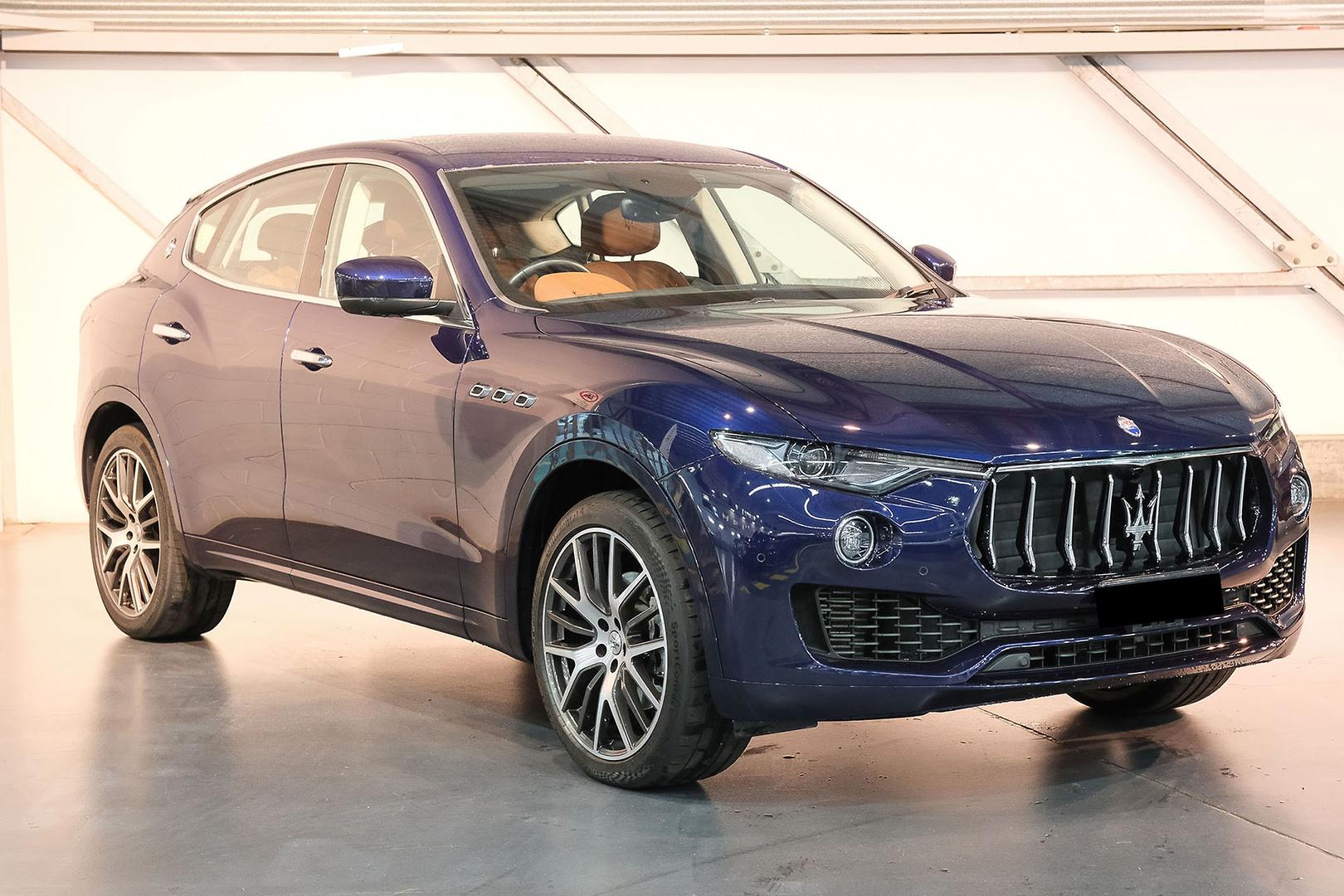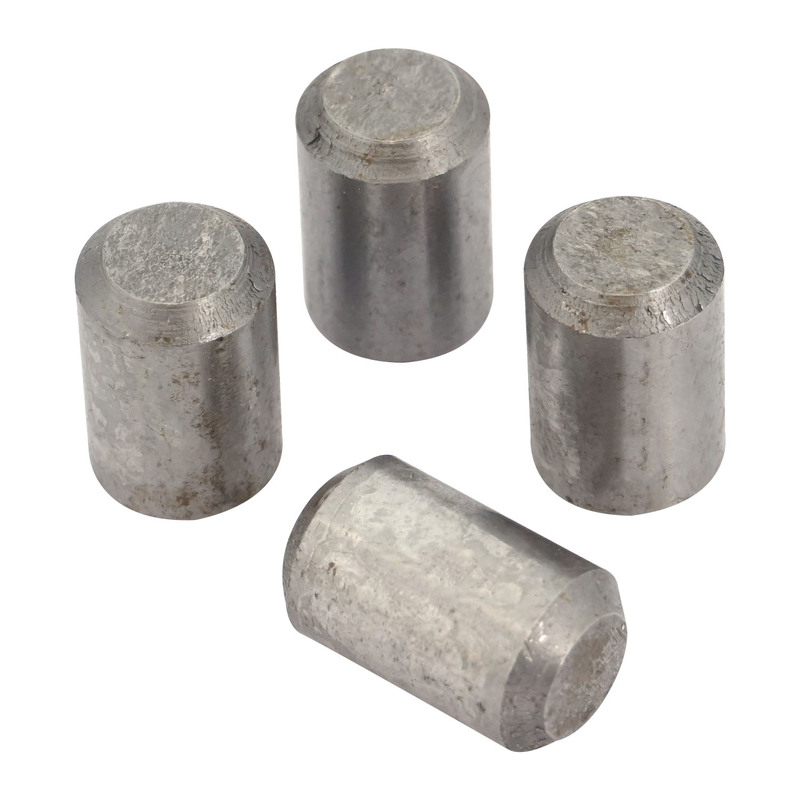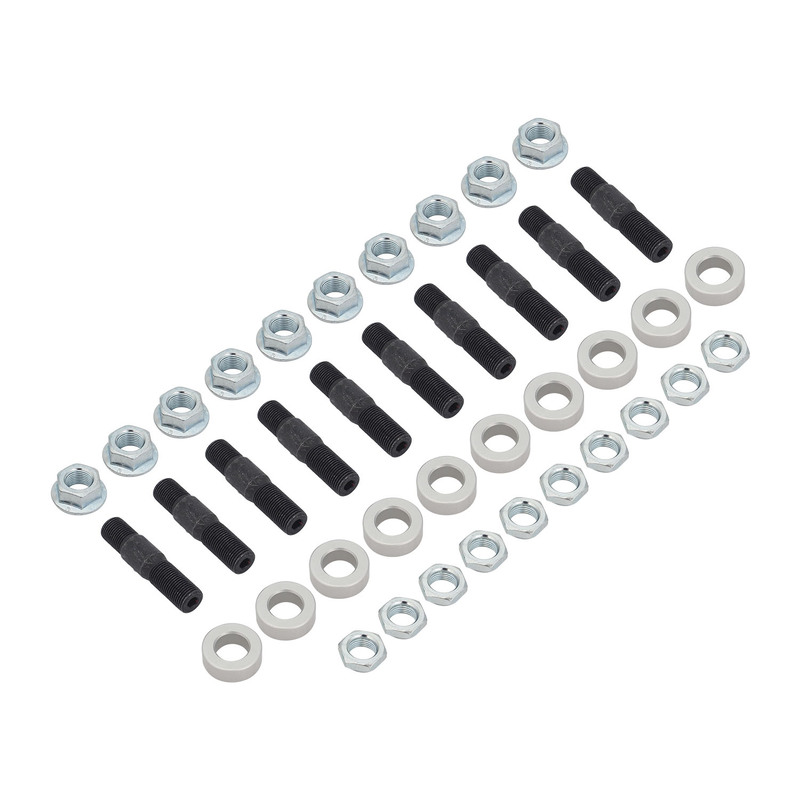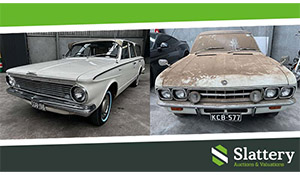Mini 1.6L Turbocharged Petrol & Mini Cooper D
The people at Mini Australia have been busy in recent months launching two very different versions of their car. The cars in question are the 1.6-litre turbocharged petrol powered Cabriolet and the new Cooper D that comes armed with a super frugal French developed 1.6-litre turbo-diesel.
The iconic Mini turns 50 this year and its original creator, the late Alec Issigonis, would not believe how far his remarkable little car has come - especially in recent years since it became part of the BMW fold. While the biggest surprise to Issigonis would be the turbo-diesel, a turbocharged petrol engine would never have been on his radar either.
During the innovative car designer's time, just about the only "oilers" around in the UK was the London taxi and its engine was a horrible, smelly thing that rattled profusely and things like Commer trucks that were even worse. What BMW has done with the Cooper D is to take a great PSA Peugeot Citroen sourced engine, make it even greener and more fuel efficient and drop it under the stubby bonnet of the Mini hatch.
The new $33,750 Mini Cooper D manual and its $36,100 automatic sibling are powered by a 1.6-litre common-rail turbo-diesel engine and for a while Mini Australia was able claim it was this country's most fuel-efficient car - and that includes the just-superseded Toyota Prius hybrid that was around $4,000 dearer. The 80kW (at 4000rpm) diesel engine delivers 240Nm of torque between just 1750rpm and 2000rpm and importantly 70 per- cent of this is on tap at just 1250rpm.
Like the turbocharged Cooper S petrol engines, the 123.5 kg Cooper D engine also has a torque "overboost" function that can deliver an extra 20Nm at short notice - just great for overtaking. All the driver has to do to engage "overboost" is to press the pedal to the metal. The four-cylinder engine's common-rail direct injection system delivers fuel at 1600bar and its specially developed turbocharger uses variable turbine geometry.
To deliver more power and performance, the degree of turbo boost is increased at higher speeds and the precisely controlled injectors ensure a super smooth multiple injection process for each operating cycle. The exhaust system is fitted with a particulates filter and meets the Euro-4 emissions standard. While the just released 2009 Prius shares the fuel efficiency limelight with the new diesel, what Mini engineers have been able to achieve with a diesel engine is quite outstanding.
For its part the new petrol/electric Prius boasts the same 3.9 litres/ 100km fuel consumption figure as the Mini "oiler" but its 89g/km CO2-emissions figure outshine the Mini's 104g/km. The best the just-superseded Prius can do is 4.4-litres and 106g/km. Mini management says Cooper D buyers can expect to spend less than $15 a week to fill up their baby when they travel the national average of 15,000km and with a maximum range of 1025km in its 40-litre tank, the car could comfortably travel from Sydney to Melbourne without troubling a service-station check-out attendant.
The Cooper D comes standard with a six-speed manual gearbox and there is an optional six-speed automatic. The car is equipped with what Mini calls its "minimalism" features that on the manual version includes an automatic start/stop function that automatically switches the engine off when the vehicle is stationary. At first when the system kicks in it's a bit disconcerting and the way it shudders during the shut down. It's rather like what happens when a manual car is stalled because it's in too high a gear or the revs are too low. Fortunately there's a button that allows you to switch it off - something I would do if the Cooper D was my car.
Brake-energy regeneration that for BMW/Mini group cars was previously only available on the BMW M3 and BMW 7-series is also on the Cooper C's standard kit menu as is a shift-point display that prompts the driver to make upshifts at the most economical time. To reduce drag there is also a streamlined aerodynamic underbody panel and the new Mini's on-demand functioning ancillaries, such as electric power assisted steering, a switchable water pump and volume flow regulated oil pump are all designed to cut fuel consumption. While at first glance the Cooper D looks the same as its petrol powered siblings, if you look closely there are a couple of styling tweaks that set it apart visually.
First there is a quite aggressive looking bonnet power dome that was needed to accommodate larger induction "plumbing." There is also a large intake below the bumper to feed air to the heat exchanger and a different patterned grille. Although the new diesel Mini's performance isn't quite as sharp as petrol powered Cooper S, the new little manual "oiler" can still sprint to 100km/h in a pretty respectable 9.9 seconds - a figure that makes it the fastest accelerating car in its class. The renowned Mini go-kart-like handling is still there, the steering continues to be sharp, precise and beautifully weighted and standard goodies include ABS brakes with brake assist, electronic brake-force distribution, cornering brake control and dynamic stability control.
There is also plenty of other standard kit including a leather wrapped height and reach-adjustable multi-function sports steering wheel, three cup holders, air conditioning, an immobiliser, a six-speaker AM/FM/CD audio system, an AUX-in connection, an on-board computer, a rear fog light and follow-me-home halogen headlights. Bluetooth connectivity, metallic paint, automatic climate control, leather trim, bi-xenon headlights, a panoramic sunroof and satellite navigation are included on an extensive options list.
Like the existing Mini range, rear-seat leg room is a scarce commodity as a real driver's car, but drivers and their front seat passenger are well catered for in the roominess and comfort departments. While the new Mini Cabrio is hard to pick from the outgoing model, it's what's under the bonnet that has changed everything. When the latest version of the Mini Cooper and Mini Cooper S hatches were released about two years ago, the big news was the engines.
Gone were the old Chrysler sourced 1.6-litre naturally aspirated and supercharged engines and they were succeeded by the great 1.6-litre naturally aspirated and 1.6-litre turbo-charged engines that were developed under the BMW/Peugeot engine-development deal. Unfortunately for Cabrio buyers, the old engines remained until late in the first quarter of this year when the new soft-top range arrived here.
The new soft tops come in six-speed manual and optional six-speed automatic guises and pricing kicks off at $39,800 for the entry level 1.6-litre naturally aspirated manual and rises to $48,000 for the manual Cooper S. Automatic adds $2350 to both versions. The higher specified Chilli versions are also available for both models and start at $43,400 for the Cooper and $51,600 for the Cooper S.
These figures equate to a $2,300 price hike for the Cooper and $1,500 for the Cooper S. While the cheapest Mini soft top you can now buy is the $39,800 manual Cooper, it's not hard to push its price tag well beyond $50,000 if you select additional goodies from the options catalogue. If you opt for the Cooper S and spend up big on the options, the cash register can top $60,000.
As well as the new more powerful engines, Mini engineers have been able to achieve significant fuel consumption, and CO2 emissions reductions, enhance the car's safety credentials and upgraded suspension calibrations.In fact both fuel consumption and emissions have been cut by between 16 percent and 18 percent.
The Cooper S Cabrio's 1.6-litre "four" is equipped with a twin-scroll turbo-charger and it delivers 128kW of peak power at 5500rpm and 240Nm of torque from between 1600 and 5000rpm. The car can sprint to 100km/h in 7.4 seconds and achieve a combined fuel consumption figure of 7.2-litres/100km and a CO2 emissions rating of 171g/km and while it doesn't have the quirky whine of a supercharger there is still a nice sporty exhaust note.
The Cooper version's 1.6-litre engine does not have the turbo-charger but it does have fully variable valve management based on BMW's "valvetronic" technology. It delivers 88kW at 6000rpm and 160Nm of torque at 4250rpm and the car can reach 100km/h in 9.8 seconds. The fuel figure is a frugal 6.1litres and the CO2 emissions figure is 145g/km.
In these days of folding metal roof systems for coupe/cabriolets, Mini - like Audi with the A3 - has stuck with a fabric top and it has good and bad points. The good things are that it can be folded away at speeds of up to 30km/h in just 15 seconds and you can also slide it back 400mm to give the car a kind of sun roof. The downsides are that when folded down, it sits too high at the rear of the car and cuts rear visibility - especially for short drivers.
The other negative is that when the roof is up, the huge slabs of fabric between the side door glass and the rear glass create nasty blind spots, especially in freeway traffic. Speaking of the open top nature of the car, this latest version of the Cabrio comes with one of the car industry's most quirky and perhaps trivial options (it is standard on the Chilli versions.)
It's called the "always open timer" and it's a clock-face-like gauge that measures how much time you keep the roof down. At $300 you'd really want to have one and the other problem is that it is mounted over one of the dash-mounted air vents.
Another feature designed to encourage open top motoring is the automatic air conditioning system that is now available for the first time for the Mini Cabrio. The system provides a consistent set temperature when the roof is opened and if the driver and front seat passenger want even more comfort, they can turn on their seat heating function. One of the shortcomings with all Mini models is their miniscule rear seat leg room - especially if the driver and front seat passenger are relatively tall and need their seats well back.
Speaking of space, the rear seats have a split-fold function and when they are folded away the luggage capacity rises to 660 litres - way more useful than the tiny 125-litres with the roof open and 170-litres when it is closed. Music fans will enjoy the seamless integration of external music players, a USB port and there is also a Bluetooth hands-free telephone system.
Another of the new Cabrio's upgrades is its single piece roll bar that is mounted behind the rear seats and extends across the entire interior width of the car to minimise its intrusion into the driver's rear line of sight.
If the system senses a possible rollover, the roll bar pops up automatically in just 150 milliseconds - a far better system than the previous model's fixed roll bars. While sports suspension is standard on the Cooper S Cabrio Chilli, buyers of the other models can specify it from the options menu and all models have fuel saving electric power steering and more powerful brakes.
Standard electronic driver aids include ABS brakes, electronic brake-force distribution, cornering brake control and dynamic stability control with hill start-off assistance. Dynamic traction control is optional. The Cooper Cabrio rides on 15-inch light alloy wheels shod with 175/65 R 15 tyres and the Cooper Cabrio Chilli has 195/65 R 16s. Run-flat tyres are optional.
The Cooper S comes with 16-inch light-alloy wheels and 195/55 R 16 runflats safety tyres and the Cooper S Chilli has 17-inch alloys that are on the options inventory for the other models.
In the safety department, the car's passenger cell is now 10 per cent more rigid than the outgoing model and there is a newly constructed floor pan and stronger A-pillars and side sills. All models come standard with frontal airbags and side head/ thorax airbags that are integrated in the outer flanks of the front seat backrest to protect the occupants' head, upper body and the hips in a side-on collision. All four seats have three-point inertia-reel seat belts with additional belt-force limiters and the front seats have optimised belt tensioners. Out on the road the new Cabrios continue the Mini tradition of go-kart-like handling and serious motoring fun. The front seats are great and really hold the two occupants firmly in place.
They handle like they're on rails and despite their front-wheel-drive layout and even with the torque of the Cooper S, torque steer is kept to a minimum.
Naturally with a car like the Mini, the ride is on the firm, sporty side but you wouldn't want it any other way. Things are a bit on the jumpy side however on rough surfaces but I for one would be prepared to put up with that. The 128kW Cooper S turbocharged engine loves to rev and it does its best work in the 3000rpm - 5000rpm range and it's a joy to hear its chirpy engine note - especially when the roof is down. Even the naturally aspirated 88kW Cooper has its share of zippiness although below about 2500rpm it is a tad dozy.
The electric power steering is a delight to use and well weighted and like all Mini models, flicking the soft top through tight corners is a real motoring experience and it's hard to stop smiling. Alec Issigonis would be pleased that the Mini legend he created is positively thriving. Topping off a great year for the Mini brand, September saw the release of the stove-hot John Cooper Works version of the Cabrio.
The hot little soft top joins the John Cooper Works match and John Cooper Works Clubman in the local model line-up and it comes with a price tag (excluding dealer delivery and statutory charges) of $56,900. Power for the new Cabrio comes from a tweaked 1.6litre "four" that runs a twin-scroll turbocharger and direct fuel injection - a combination that can sprint the car to 100km/h in just 6.9 seconds.
Maximum power of 155kW is at the driver's beck and call from a low (for a petrol engine) 1850rpm all the way to 5600rpm and while the normal peak-torque figure is 260Nm, this can be punted up to 260Nm when the "overboost" mode kicks in. Power goes to the front wheels via a slick six-speed manual gearbox and the people from Mini claim a combined fuel-consumption figure of 7.1-litres/ 100km.
Buyers can look forward to an impressive standard kit inventory that includes 17-inch cross-spoke light alloy wheels, sports seats finished in combination cloth leather, piano black décor trim, tinted windows, bonnet stripes, dynamic stability control with integrated electronic diff-lock control, dynamic traction control, automatic climate control, the unique "always open" timer, sports suspension, xenon lights and a premium Harmon Kardon hi-fi audio system.
Ian Crawford
Source: JUST CARS, October 2009, Collectors Issue #164


















